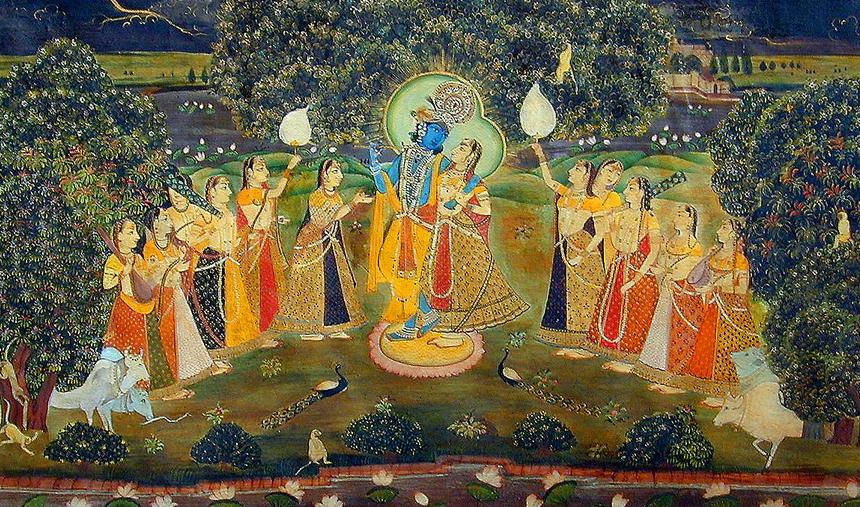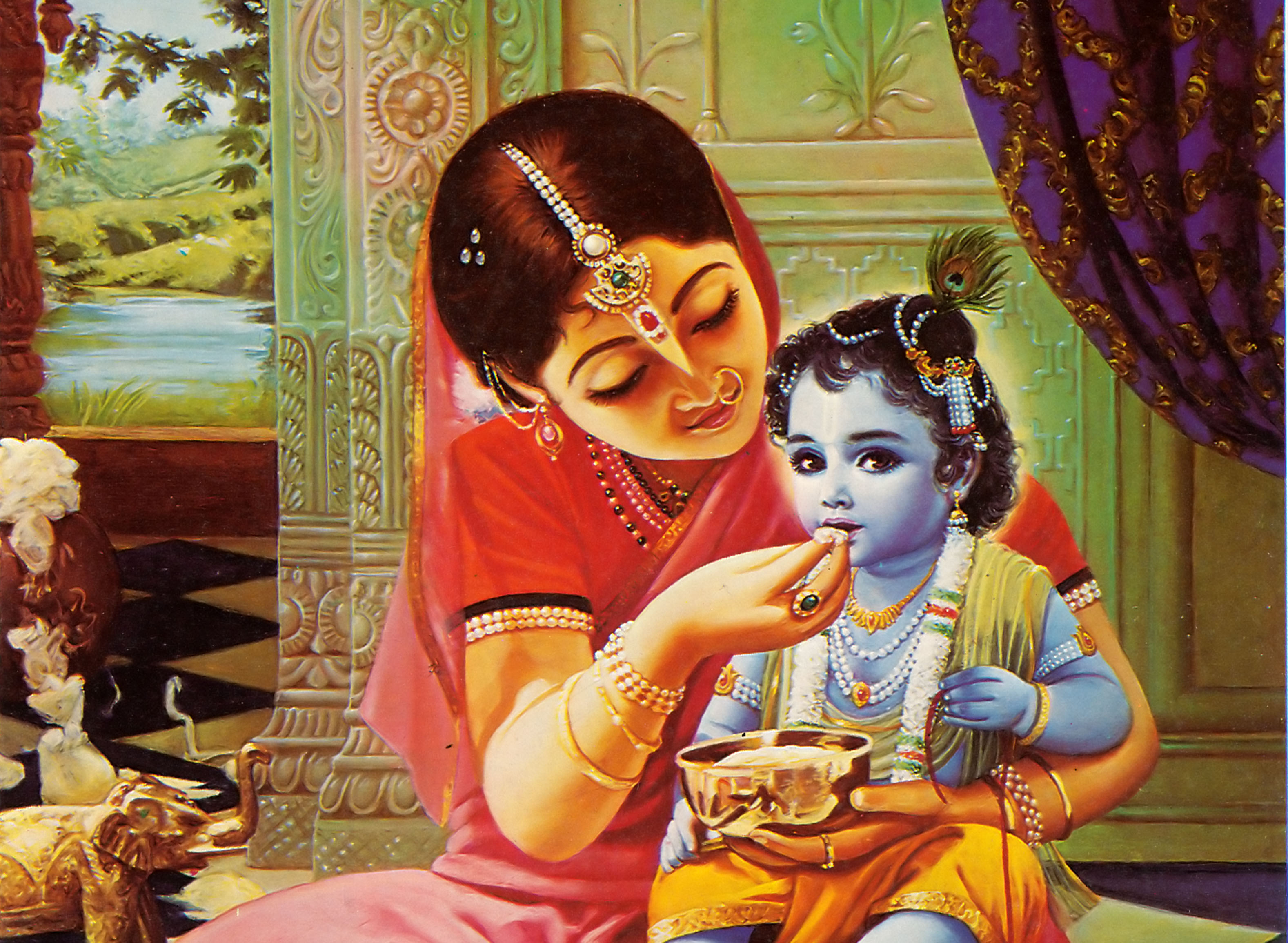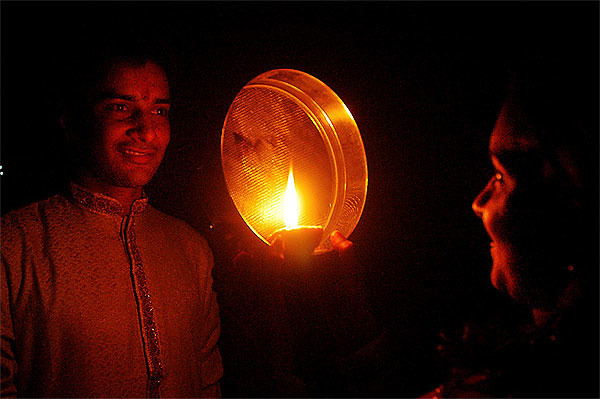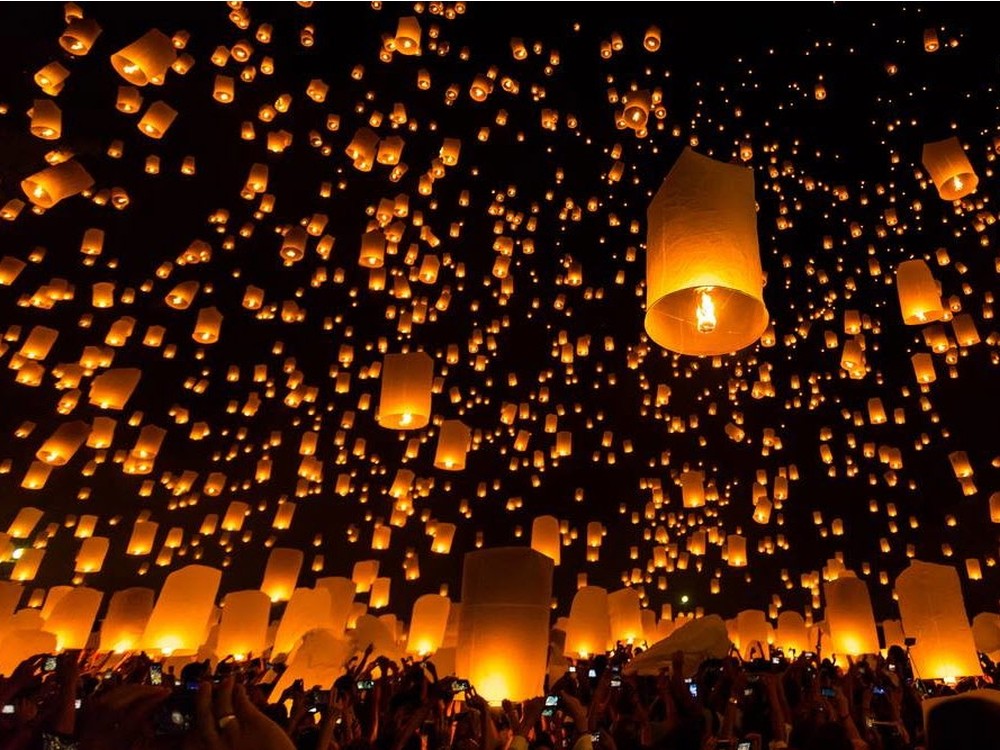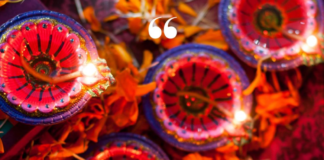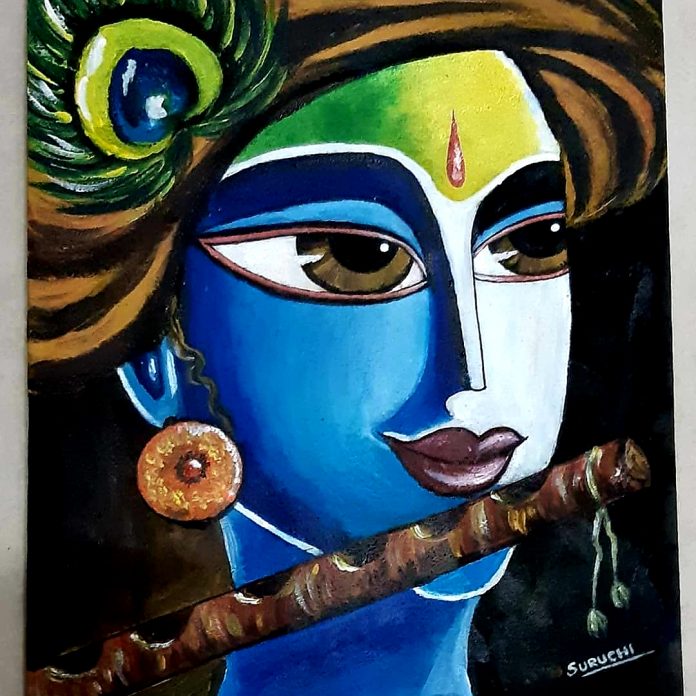
Janamashtami (also known as Krishnastami or Gokulastami) is the birthday of Lord Krishna, the eighth avatar (incarnation) of Lord Vishnu, believed to have been born about five thousand years ago in Mathura in ‘Dwapar Yuga‘. It is celebrated in the August/September months, on the Ashtami of Krishna Paksh or the 8th day of the dark fortnight in the month of Bhadon and is celebrated over two days of deep spiritual renewal. The first day is Krishnashtami or Gokulashtami. The second day is called Kalastami or more popularly Janmashtami. This celebration is said to be revealed originally by the Sri Krishna himself to Yudhishthira, the eldest of Pandavas, as mentioned in the Bhavishyottara Puran.
He was born to Vasudev and Devki, who were imprisoned by Devki’s evil brother Kansa and was brought up by Nanda and Yashoda. The birth of Lord Krishna is believed to be symbolic of our imprisonment in worldly illusions, where He took birth with us and led us to salvation and peace, vanquishing all evils depicted by Kansa in the story.
Krishna is considered to be a warrior, hero, teacher and philosopher by Hindus.
Janamashtami Celebrations
The Lord Krishna devotees celebrate Janmashtami by fasting and staying up until midnight, the time when Krishna is believed to have been born. Images of Krishna’s infancy are placed in swings and cradles in temples and homes. At midnight, devotees gather around for devotional songs, dance and exchange gifts. Some temples also conduct readings of the Hindu religious scripture Bhagavad Gita.
The deities are also bathed with a variety of auspicious liquids in a kind of ablution ceremony called abhisheka. Sometimes taking over two hours, this is performed with great pomp.
Finally, at midnight, priests pull apart the curtains to reveal the freshly dressed deity of Krishna on a creatively festooned and colored altar. The excitement builds, and a rousing kirtan ensues.
Celebration in Mathura and Vrindavan
The birthplace of Krishna, Mathura and Vrindavan celebrate this occasion with great enthusiasm and splendor. Religious plays or Raslilas are performed to recreate events from the life of Lord Krishna and to honor his love for Radha. Devotees gather to these pious places to celebrate Janmashtami. On this auspicious day, homes and temples are decorated and illuminated beautifully. Singing and dancing is marked as the celebration of this festive all over northern India. At midnight, the figurine of infant Krishna is bathed and laid in a cradle, which is rocked, amidst the ringing of bells. In the state of Maharashtra, people enact the Krishna’s childhood attempts to steal butter and curd from earthen pots which were beyond his reach. A similar earthen pot is suspended high above the ground and groups of people form human pyramids and try to reach the pot and break it. The town of Dwarka in Gujarat which is Krishna’s own land witnesses hordes of visitors gathering here for celebrations.
The Ceremony of Dahi-Handi:
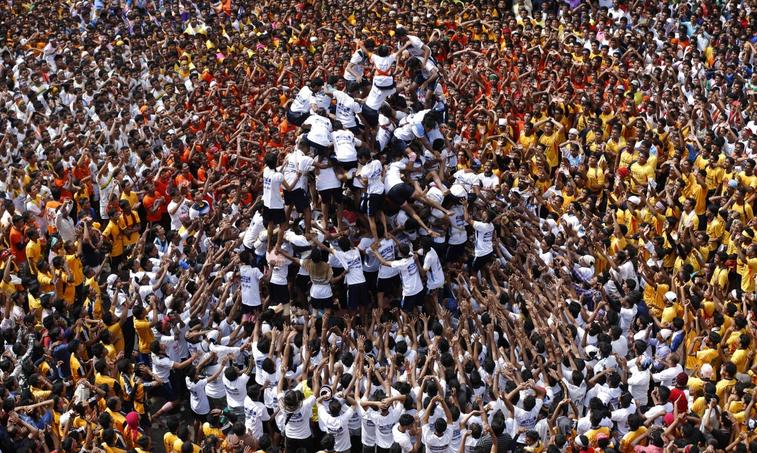 During this ceremony a large earthenware pot is filled with milk, curds, butter, honey fruits etc. and is suspended from a height between 20 to 40 feet. Young men and boys come forward to claim this prize by constructing a human pyramid and standing over each others shoulders. The pyramid will be tall enough to enable the topmost person to reach the pot and claim the contents after breaking it. Normally, currency notes are tied to the rope by which the pot is suspended. This prize money is distributed among those who participate in the pyramid building.
During this ceremony a large earthenware pot is filled with milk, curds, butter, honey fruits etc. and is suspended from a height between 20 to 40 feet. Young men and boys come forward to claim this prize by constructing a human pyramid and standing over each others shoulders. The pyramid will be tall enough to enable the topmost person to reach the pot and claim the contents after breaking it. Normally, currency notes are tied to the rope by which the pot is suspended. This prize money is distributed among those who participate in the pyramid building.
This ceremony replicates Krishna’s love for milk and butter. In his childhood, the Lord Krishna along with his mates used to raid the houses of his neighbors in search of milk and butter.
Janmashtami Legend
According to Hindu mythology Krishna who was the eighth incarnation of Lord Vishnu was born under miraculous conditions. He was born to King Vasudev and Devaki on a dark stormy midnight.
Apparently on the day King Vasudev and Devaki were married a divine voice foretold that the eighth child of Devaki would end his evil reign by killing him. Hence Kansa had imprisoned his sister Devaki and her husband and also killed their seven children one by one.
However at the time of Lord Krishna’s birth a divine intervention saved the baby. All the guards went into deep slumber, and were not able to inform Kansa about the birth of the new born. A voice from the heavens commanded Vasudev to take the child to Gokul and exchange the child with the daughter of Yashodra and Nanda.
Despite being a stormy night and the waters of River Yamuna raging, the river parted to let Vasudev pass who was carrying the baby Krishna in a basket. A huge snake with 2000 hoods known as Adidesha formed a protective canopy for the baby Lord Krishna. And once Vasudev returned with the daughter of Nanda and Yashodra, the shackles which had opened earlier fastened themselves and the prison doors closed and the guards awakened.
When Kansa tried to kill the child, it slipped from his hands and transformed into a Goddess Yogmaya who informed him that his destroyer has already taken birth.
According to a popular legend in Vrindavan – Madhuban is the exact place where Lord Krishna performed rasleelas with his beloved gopis more than 5000 years ago and that Lord Krishna till today descends to perform rasleelas. It believed that anyone venturing into Madhuban during the night either dies or become insane. Hence, no local resident go there during the night and all the festivities are scheduled for day time only.
As you celebrate Janmashtami, remember that just as we enjoy the attention and fun on our birthday, so the Lord also enjoys our attention and gifts on His appearance day. The difference between us and Krishna is that He is able to reciprocate perfectly with each one of us. In the transcendental realm, everything that we offer to the Lord with love and devotion will benefit us unlimitedly, and those benefits will stay with us for eternity
Hare Krishna Mantra
Hare Krishna, Hare Krishna, Krishna Krishna, Hare Hare
Hare Rama, Hare Rama, Rama Rama, Hare Hare
The mantra is most commonly translated as, “O Lord, O Energy of the Lord, please engage me in Your service.”



